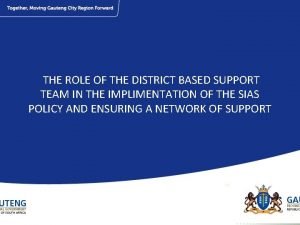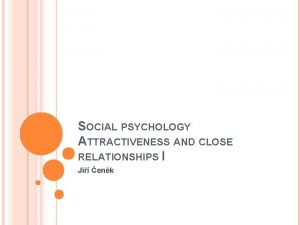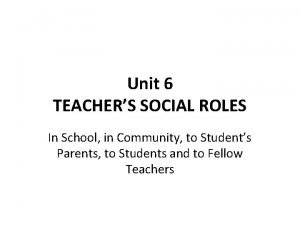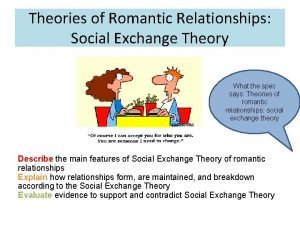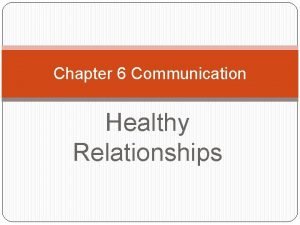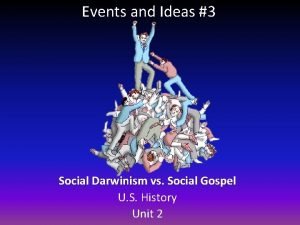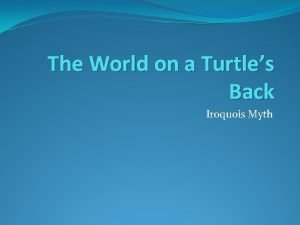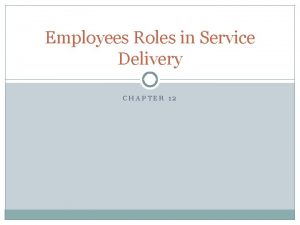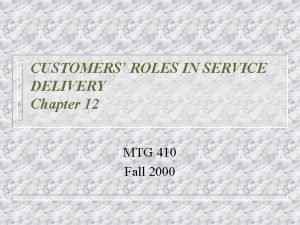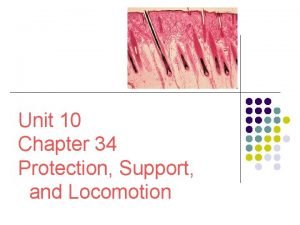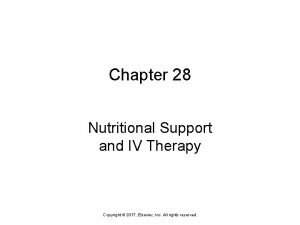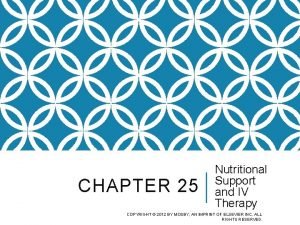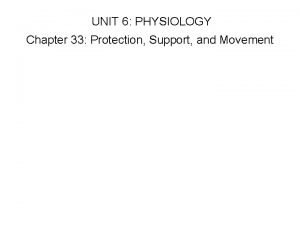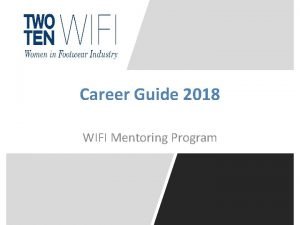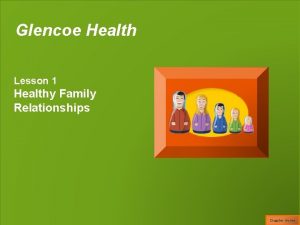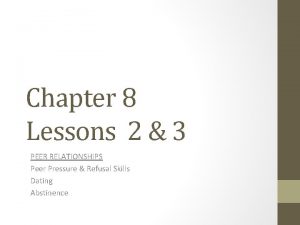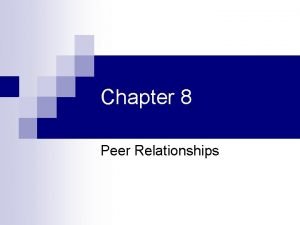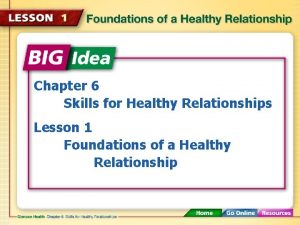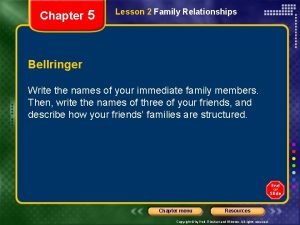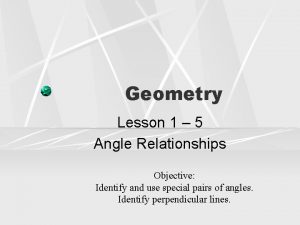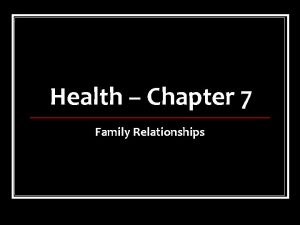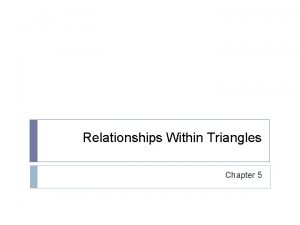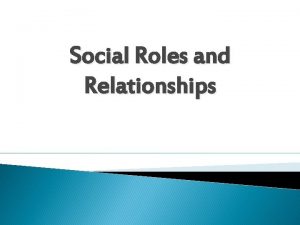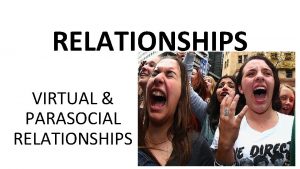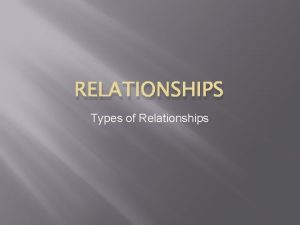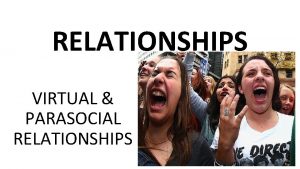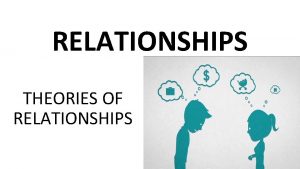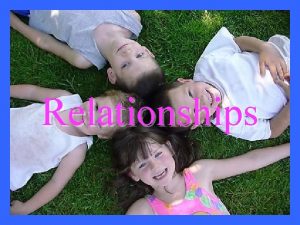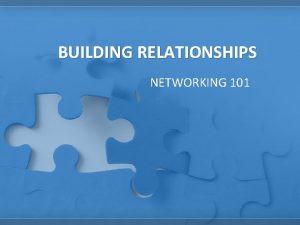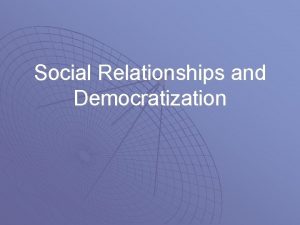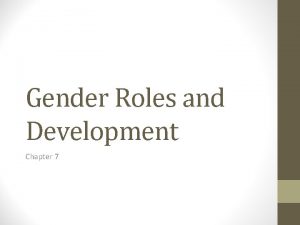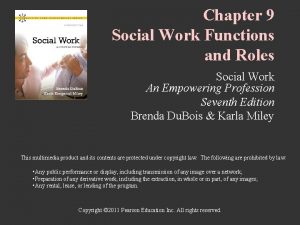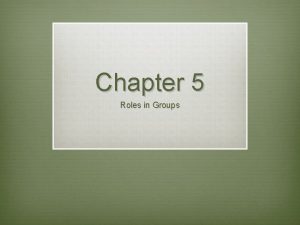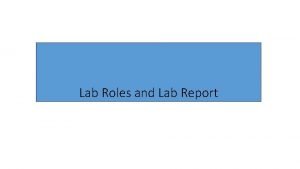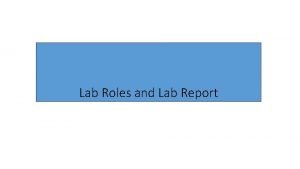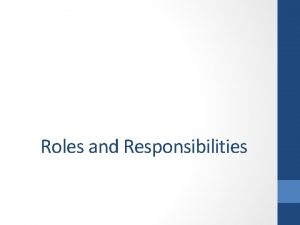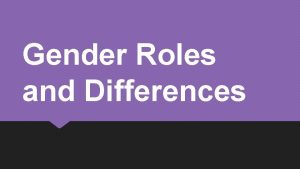Chapter 44 Roles Relationships and Social Support Copyright







































- Slides: 39

Chapter 44 Roles, Relationships, and Social Support Copyright 2004 by Delmar Learning, a division of Thomson Learning, Inc.

Historical Trends of the Family as a Social Institution § The family has been recognized as a social institution that exists in some form in all cultures and societies. Copyright 2004 by Delmar Learning, a division of Thomson Learning, Inc. 2

Historical Trends of the Family as a Social Institution § The Family In Agrarian Time • Members of small groups worked together and roles were clearly defined. • Genetic linkage was the inevitable outcome, laying the foundation for the development of modern conjugal families. • Family groups collected into small towns, increasing the complexity of society and social relationships. Copyright 2004 by Delmar Learning, a division of Thomson Learning, Inc. 3

Historical Trends of the Family as a Social Institution § The Family In Agrarian Time • Dependence on the family and related small groups for basic needs led to the development of collectivism. • Collectivism was characterized by shared values and norms of behavior. Copyright 2004 by Delmar Learning, a division of Thomson Learning, Inc. 4

Historical Trends of the Family as a Social Institution § Post-Industrial Revolution • People moved away from their extended families on farms and in small towns to factory jobs in the cities. • Over time, socialization of children was increasingly delegated to institutions outside of the family. • Individual values began to gain favor over those of the original family unit. Copyright 2004 by Delmar Learning, a division of Thomson Learning, Inc. 5

Historical Trends of the Family as a Social Institution § Individualism • The predominate cultural type in the United States and many other industrialized countries • Formation of nuclear families in urban settings Copyright 2004 by Delmar Learning, a division of Thomson Learning, Inc. 6

Historical Trends of the Family as a Social Institution § The Purposes of Family • A social institution to socialize children. • A family serves the needs of the individual family members. Copyright 2004 by Delmar Learning, a division of Thomson Learning, Inc. 7

Structural-Functional Theory § The family functions to serve the needs of its members. § Individual behavior is based on norms and values learned within the family. Copyright 2004 by Delmar Learning, a division of Thomson Learning, Inc. 8

Structural-Functional Theory § Family Function • • Affective function Socialization Conjugal/reproductive function Family coping function Economic function Basic needs function Health promotion function Copyright 2004 by Delmar Learning, a division of Thomson Learning, Inc. 9

Structural-Functional Theory § Family Structure • • Multi-generational extended family Nuclear family Blended families Single adults living alone Single adults living communally Cohabiting heterosexual couples Cohabiting homosexual couples Copyright 2004 by Delmar Learning, a division of Thomson Learning, Inc. 10

Structural-Functional Theory § Family Structure • The genogram is a graphic representation of the family form. Copyright 2004 by Delmar Learning, a division of Thomson Learning, Inc. 11

Genogram Copyright 2004 by Delmar Learning, a division of Thomson Learning, Inc. 12

Family Role Structure § Formal Roles § Informal Roles Copyright 2004 by Delmar Learning, a division of Thomson Learning, Inc. 13

Family Role Structure § Formal Roles for Family • Contemporary families assign roles in a variety of ways. • Societal sanctions exist when adult family members fail to ensure a minimal degree of family functioning. Copyright 2004 by Delmar Learning, a division of Thomson Learning, Inc. 14

Family Role Structure § Position in the Family • Socioculturally constructed • Share social expectations for role performance • In nontraditional families, dysfunction in the family process can occur and is related to unclear consensus about assigning responsibilities. Copyright 2004 by Delmar Learning, a division of Thomson Learning, Inc. 15

Family Role Structure § Role of Children in Family • Limited by developmental stage, societal sanction, and law • In most developed nations, law prohibits children from entering the work force outside of family enterprises. • In developing countries, children may be assigned into servitude or sent out to pedal food or wares. Copyright 2004 by Delmar Learning, a division of Thomson Learning, Inc. 16

Family Role Structure § Performance of Roles in Family • Role competency requires individuals to understand their roles. • Role performance depends on established norms for how roles should be enacted. Copyright 2004 by Delmar Learning, a division of Thomson Learning, Inc. 17

Family Role Structure § Performance of Roles in Family • Gender Copyright 2004 by Delmar Learning, a division of Thomson Learning, Inc. 18

Performance of Roles in Family § Role Disorders • • Role Stress Role Strain Role Conflict Role Overload Copyright 2004 by Delmar Learning, a division of Thomson Learning, Inc. 19

Family Role Structure § Role Transition • Situational role transitions are changes that are made in role when families experience the addition or loss of a family member. • Role transition related to illness can be temporary or long term, requiring flexibility, or changes in role assignment and role expectations. Copyright 2004 by Delmar Learning, a division of Thomson Learning, Inc. 20

Values and Their Effect on Family Function § A family’s functioning is strongly influenced by the values system learned during the socialization process. § Value incongruence with the surrounding community can lead to conflict within the family. Copyright 2004 by Delmar Learning, a division of Thomson Learning, Inc. 21

Communication Patterns in the Family § Native language patterns are related to the primary language learned and spoken as a child. § Clear and open communication among family members is a strong determinant of how the family performs in any of its functions. Copyright 2004 by Delmar Learning, a division of Thomson Learning, Inc. 22

Communication Patterns in the Family § Culturally sanctioned communication prepares children to communicate with elders and to live in a civilized society. Copyright 2004 by Delmar Learning, a division of Thomson Learning, Inc. 23

Power Structure § Power is the ability to control, influence, or change another person’s behavior. § Power is related to resources. § In most families, parents and other competent adults control the resources. Copyright 2004 by Delmar Learning, a division of Thomson Learning, Inc. 24

Power Structure § Family Power • Chaotic power • Symmetrical power • Complementary power Copyright 2004 by Delmar Learning, a division of Thomson Learning, Inc. 25

Decision Making about Health Behaviors § Often decided within the power structure of the family. § Many health decisions are made by the family prior to accessing the health care system. Copyright 2004 by Delmar Learning, a division of Thomson Learning, Inc. 26

Decision Making about Health Behaviors § Bargaining § Coercion § De-facto Copyright 2004 by Delmar Learning, a division of Thomson Learning, Inc. 27

Theories that Explain Family Processes § Family Development Theory • Human families move linearly and predictably through developmental stages in time. • Developmental transitions are characterized by stress that must be managed. Copyright 2004 by Delmar Learning, a division of Thomson Learning, Inc. 28

Theories that Explain Family Processes § Family Systems Theory • Based on a very broad and abstract theory known as General Systems Theory. - Systems are made up of interacting parts. - Systems are holistic and greater than the sum of its parts. Copyright 2004 by Delmar Learning, a division of Thomson Learning, Inc. 29

Family-Based Social Support § § Concept of Social Support Social Isolation Social Support from Others Conflict and Negative Social Support Copyright 2004 by Delmar Learning, a division of Thomson Learning, Inc. 30

Mental Health and Family. Based Social Support § Mental illness is a common response to overwhelming stressors related to major family transitions and health problems. § Management of the client’s mental health and that of the family requires a multidisciplinary approach. Copyright 2004 by Delmar Learning, a division of Thomson Learning, Inc. 31

Socioeconomic Status (SES) and Social Support § Social class is associated with inequities in accessing resources and power. § The health status and longevity of socially and culturally marginalized groups is less optimal than it is for members of more privileged classes. Copyright 2004 by Delmar Learning, a division of Thomson Learning, Inc. 32

Social Support and the Nursing Process § Assessment • • • Family structure Patterns of communication Power base Family’s perception of family health Evidence of family cohesiveness, including emotional and instrumental social support Copyright 2004 by Delmar Learning, a division of Thomson Learning, Inc. 33

Nursing Diagnoses § Ineffective Family Coping: compromised/disabling/risk for § Altered Family Processes Copyright 2004 by Delmar Learning, a division of Thomson Learning, Inc. 34

Outcome Identification and Planning § Role expectations will be renegotiated. § Open communication between family members will be enhanced. § Multidisciplinary sources of social support will be identified and accessed. Copyright 2004 by Delmar Learning, a division of Thomson Learning, Inc. 35

Implementation § Provide information to the client and family regarding alteration in health state. § Encourage family members to verbalize their concerns. § Suggest supportive behaviors for family members. Copyright 2004 by Delmar Learning, a division of Thomson Learning, Inc. 36

Implementation § Assist family members in identifying social network resources. § Assist in role performance and support. Copyright 2004 by Delmar Learning, a division of Thomson Learning, Inc. 37

Evaluation § Affirmation by client of increased selfesteem, self-efficacy, and lessened symptomatology from the client. § Family members report adequate rest and nutrition. § Family is receiving assistance from a broader network of resources. Copyright 2004 by Delmar Learning, a division of Thomson Learning, Inc. 38

Evaluation § Observation by the nurse of beginning coping skills and calmer emotions. § There is evidence of improved communication between family members. § Family members display affective functioning in the form of nurturing interactions. Copyright 2004 by Delmar Learning, a division of Thomson Learning, Inc. 39
 School based support team
School based support team Supporting details major and minor
Supporting details major and minor Physical attractiveness
Physical attractiveness Apa itu social thinking
Apa itu social thinking Social thinking social influence social relations
Social thinking social influence social relations Social roles of a teacher
Social roles of a teacher Are gender roles a social construct
Are gender roles a social construct Definition of social relationship
Definition of social relationship Thibaut and kelley 1959
Thibaut and kelley 1959 Section 1 organisms and their relationships
Section 1 organisms and their relationships Principles of ecology section 2 flow of energy
Principles of ecology section 2 flow of energy Chapter 2 principles of ecology answer key
Chapter 2 principles of ecology answer key Chapter 2 principles of ecology answer key
Chapter 2 principles of ecology answer key Chapter 6 communication and relationships
Chapter 6 communication and relationships Define the relationship chapter 14
Define the relationship chapter 14 Chapter 2 section 1 organisms and their relationships
Chapter 2 section 1 organisms and their relationships Compare and contrast social darwinism and social gospel
Compare and contrast social darwinism and social gospel The world on the turtle's back to instill awe
The world on the turtle's back to instill awe Becoming a family support worker
Becoming a family support worker 5 roles of employees in service delivery operations
5 roles of employees in service delivery operations Customers role in service delivery
Customers role in service delivery Protection support and locomotion answer key
Protection support and locomotion answer key Chapter 24 nutritional care and support
Chapter 24 nutritional care and support Chapter 28 nutritional support and iv therapy
Chapter 28 nutritional support and iv therapy Chapter 28 nutritional support and iv therapy
Chapter 28 nutritional support and iv therapy Chapter 28 nutritional support and iv therapy
Chapter 28 nutritional support and iv therapy Chapter 33: protection, support, and movement answers
Chapter 33: protection, support, and movement answers Camera handling care and support
Camera handling care and support Mentor and mentee roles and responsibilities
Mentor and mentee roles and responsibilities Chapter 7 lesson 1 healthy family relationships
Chapter 7 lesson 1 healthy family relationships Chapter 8 lesson 1 safe and healthy friendships
Chapter 8 lesson 1 safe and healthy friendships Chapter 7 lesson 1 healthy family relationships answer key
Chapter 7 lesson 1 healthy family relationships answer key Chapter 8 healthy peer relationships
Chapter 8 healthy peer relationships Chapter 6 skills for healthy relationships
Chapter 6 skills for healthy relationships Chapter 5 family relationships answers
Chapter 5 family relationships answers Relationships within triangles
Relationships within triangles Vertical angles theorem
Vertical angles theorem Chapter 7 family relationships
Chapter 7 family relationships Chapter 7 family relationships
Chapter 7 family relationships Unit 5 relationships in triangles
Unit 5 relationships in triangles
